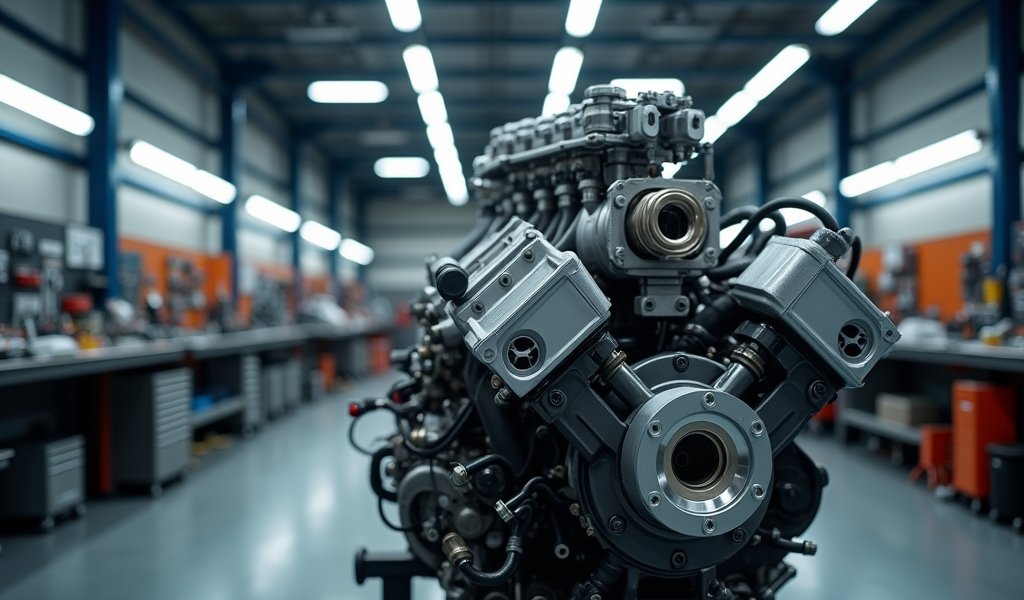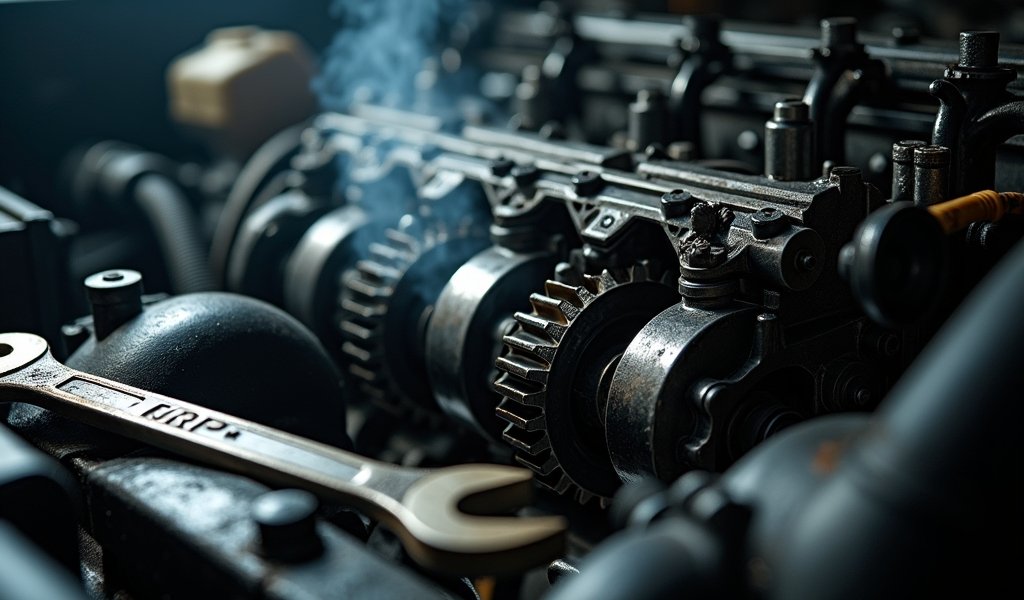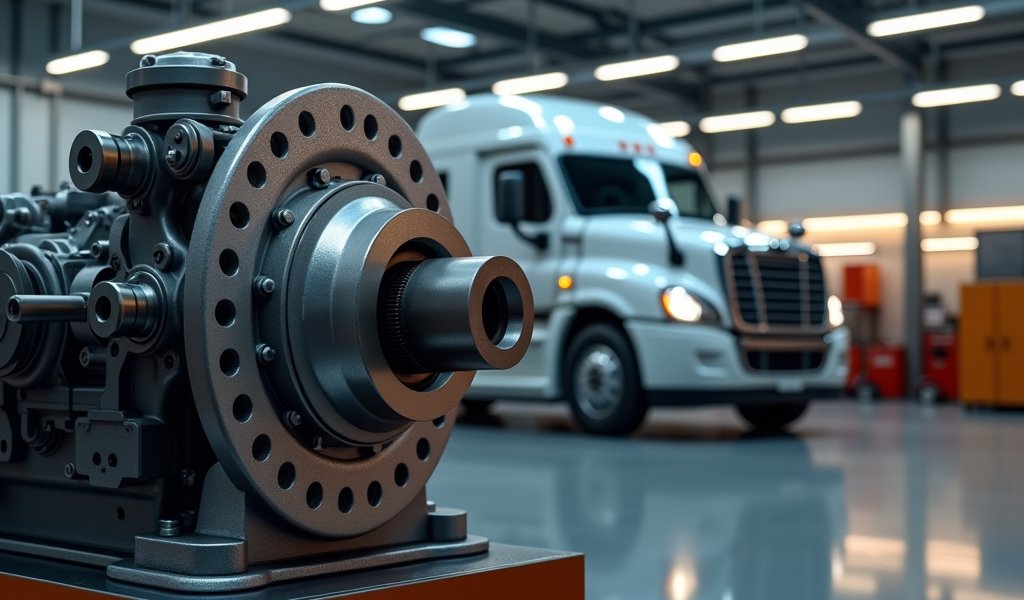Overview
This article explains five essential fixes for diesel injection pump timing issues, covering adjustment procedures, component replacement, mechanical repairs, electronic solutions, and preventive maintenance. It details how proper injection timing is critical for diesel engine performance, with symptoms of incorrect timing including power loss, excessive smoke, hard starting, poor fuel economy, and engine knock.
Table of Contents
- Understanding Injection Pump Timing
- Symptoms of Incorrect Injection Timing
- Fix #1: Proper Timing Adjustment Procedure
- Fix #2: Replacing Worn Timing Components
- Fix #3: Addressing Mechanical Pump Issues
- Fix #4: Electronic Control Module Fixes
- Fix #5: Preventive Maintenance
- Conclusion
- Frequently Asked Questions
Understanding Injection Pump Timing
Have you ever wondered what makes a diesel engine tick—literally? It all comes down to timing. The injection pump in your diesel engine isn’t just another component; it’s the timekeeper of a complex mechanical orchestra.
In simple terms, injection pump advance timing determines exactly when fuel enters the combustion chamber. Think of it as the conductor ensuring every musician plays at precisely the right moment. When this timing is perfect, your engine runs with power, efficiency, and that distinctive diesel purr. When it’s off? That’s when the problems begin.
Unlike gasoline engines that use spark plugs to ignite the fuel, diesel engines rely on compression to create the heat needed for combustion. This makes timing absolutely critical—perhaps even more so than in your average gas-powered vehicle.
Advance timing specifically refers to how early the fuel is injected before the piston reaches top dead center (TDC). This measurement, typically in degrees of crankshaft rotation, must be spot-on for optimal performance. Even a few degrees off can transform your reliable workhorse into a problematic money pit.
Several factors can cause timing to drift over time:
- Natural wear in timing components
- Internal pump component deterioration
- Loosening of mechanical adjustments
- Electronic control issues in modern systems
- Poor fuel quality causing internal deposits
The consequences of incorrect timing aren’t just annoying—they can be expensive. Too advanced, and you’ll get engine knock that can eventually damage pistons and other components. Too retarded, and you’ll waste fuel while robbing yourself of power and potentially overheating your engine.
Symptoms of Incorrect Injection Timing

Your diesel engine speaks a language of its own, and when the injection timing is off, it has plenty to say. Let’s decode these warning signs so you can catch timing issues before they escalate into major problems.
First and foremost, power loss is the most noticeable symptom. Does your truck feel like it’s dragging an invisible load? That sudden sluggishness, particularly when accelerating or climbing hills, often points directly to timing issues. What’s happening is that fuel isn’t being injected at the optimal moment for maximum power generation.
Then there’s the smoke signals—literally. Excessive black smoke billowing from your exhaust is essentially unburned fuel being wasted. Not only is this an environmental concern, but it’s also your engine’s way of telling you that combustion isn’t happening when it should.
Starting troubles, especially in cold weather, often stem from timing problems. When the injection sequence is off-kilter, creating the perfect conditions for combustion becomes challenging. You might notice longer cranking times or the need for multiple attempts to get your engine running.
Pay attention to your fuel economy too. Have you found yourself filling up more frequently? Improper timing means incomplete combustion, essentially sending your diesel (and hard-earned money) straight out the tailpipe.
That distinctive diesel knock—normally a reassuring sound to diesel enthusiasts—can become problematic when timing is off. If the clatter sounds louder than usual or has an irregular rhythm, your injection timing might be too advanced.
Finally, excessive engine heat can indicate retarded timing. When fuel burns too late in the cycle, more heat gets transferred to your cooling system rather than being converted to mechanical energy.
Fix #1: Proper Timing Adjustment Procedure
Let’s roll up our sleeves and dive into the first and most fundamental fix: properly adjusting your injection pump timing. For many diesel engines, particularly those with mechanical injection pumps, this is often the solution that delivers immediate performance improvements.
Before starting, gather these essential tools:
- A timing tool specific to your engine model
- A quality wrench set
- A torque wrench for proper reassembly
- Your engine’s service manual (this isn’t optional—it’s mandatory)
- Clean shop rags and appropriate safety equipment
Now, let’s walk through a general timing adjustment procedure (though specific steps will vary by engine):
Start with preparation—ensure your engine is cold and positioned at top dead center (TDC) on the compression stroke of cylinder #1. Most engines have timing marks on the front pulley or flywheel that align when properly positioned. This is your starting point for accurate measurements.
Next, locate the timing marks on your injection pump flange. These should align with corresponding marks on the engine’s timing cover or gear housing when timing is correct. If they don’t match up, you’ve confirmed a timing issue.
Using your timing tool (often a dial indicator or special timing pin), verify where your timing currently stands relative to factory specifications. This baseline measurement helps determine how much adjustment is needed.
For the actual adjustment, loosen the injection pump mounting bolts just enough to allow movement—not so much that the pump becomes completely loose. Using the adjustment mechanism (usually a slotted mount or adjustment bolt), rotate the pump body slightly in the appropriate direction to advance or retard timing according to your earlier measurements.
After making the adjustment, tighten the mounting bolts to the specified torque value in your service manual. Then, crucially, recheck the timing to ensure it remains correct after tightening. Sometimes the act of tightening can slightly shift the pump position.
Remember that timing specifications vary significantly between engines. What’s perfect for a Cummins 5.9L might be completely wrong for a Ford Powerstroke or a Mercedes OM617. Professional mechanics always consult manufacturer specifications rather than relying on general rules.
Fix #2: Replacing Worn Timing Components
Sometimes, adjusting the injection pump isn’t enough because the underlying timing components themselves have worn out. Think of it like trying to tune a guitar with worn-out tuning pegs—you might get it right momentarily, but it won’t hold the adjustment.
The most common wear points in diesel timing systems include:
- Timing chains that have stretched over thousands of miles
- Timing gears with worn teeth or damaged keyways
- Chain tensioners and guides that have lost their spring tension
- Woodruff keys that have become wallowed out from stress
- Cam and crank gears with excessive backlash
How do you identify worn components? Look for telltale signs like metallic debris in the oil, timing covers that show signs of chain contact, or visible slack in the timing chain when inspected through the oil fill port. Another indication is timing that won’t stay adjusted or keeps drifting shortly after correction.
When replacing timing components, follow these best practices:
Always replace timing components as complete sets. If the chain is worn, the sprockets likely are too. Mixing new and old parts often leads to premature failure of the new components.
Mark all timing positions carefully before disassembly. Taking clear photos with your phone before removing components can save tremendous headaches during reassembly.
When it comes to parts quality, this is one area where skimping rarely pays off. Proper crankshaft trigger wheel alignment and quality timing components ensure longer service life and maintained timing accuracy. I’ve seen too many repeat repairs necessitated by cutting corners on component quality.
After replacement, verify timing using the proper procedure for your engine model. A complete timing component replacement should always be followed by an injection timing check, as the new parts may position things slightly differently than the worn components did.
For belt-driven systems, pay special attention to tensioner adjustment. Too tight, and you’ll prematurely wear bearings; too loose, and timing will drift as the belt stretches.
Fix #3: Addressing Mechanical Pump Issues
Sometimes the problem isn’t with the timing adjustment or drive components, but with the injection pump itself. These precision-engineered devices operate under extreme pressures and can develop internal issues that affect timing.
The first decision you’ll face is whether to rebuild or replace your injection pump. This choice typically boils down to a few factors:
- Cost considerations (rebuilding is usually less expensive)
- Parts availability for your specific pump model
- The age and projected service life of your vehicle
- Availability of skilled rebuilders in your area
- Downtime you can tolerate (replacements are typically faster)
Common internal pump problems that affect timing include:
- Worn pump plungers and barrels causing fuel delivery issues
- Failed governor components allowing speed fluctuations
- Leaking seals causing air intrusion and timing inconsistency
- Damaged advance mechanisms (mechanical or hydraulic)
- Worn drive gears inside the pump housing
For specialized pumps like Bosch, Denso, or Stanadyne units, I strongly recommend seeking a professional diesel shop with a proper test bench. These facilities can calibrate the pump to exact specifications under simulated load conditions—something impossible to do in a home garage.
A quality pump rebuild should include comprehensive testing both before and after service. Don’t hesitate to ask for documentation of work performed and test results showing improvements in delivery timing, quantity, and pressure.
When reinstalling a repaired or new pump, follow the manufacturer’s timing procedure exactly. The initial timing setting is crucial for proper break-in and performance. Modern diesel injection systems operate with incredible precision—pressures exceeding 30,000 psi and timing measured in microseconds—making proper installation essential.
Fix #4: Electronic Control Module Fixes

Modern diesel engines have added layers of electronic control that can both complicate and simplify timing issues. If you’ve got a diesel built in the last 20 years, the Engine Control Module (ECM) likely plays a significant role in injection timing.
One of the simplest yet surprisingly effective fixes is simply resetting or reprogramming the ECM. Over time, these computers build up adaptive learning parameters that might be compensating for gradual component wear. A reset can clear these adaptations and restore factory timing parameters.
For many electronic issues, a quality diagnostic scanner is your best friend. These tools can display actual timing values in real-time, making diagnosis more precise:
- Connect a professional-grade scanner with diesel-specific functions
- Compare actual timing values to specifications in the service information
- Run actuator tests to verify electronic component function
- Check for stored fault codes that might indicate timing-related issues
Several sensors directly influence injection timing in modern systems:
- Crankshaft position sensor (the most critical for timing)
- Camshaft position sensor
- Mass airflow or manifold pressure sensors
- Engine coolant and intake air temperature sensors
Any of these can throw off timing if they’re providing inaccurate data to the ECM. Testing them individually can often reveal the culprit behind timing issues without expensive parts replacement.
Don’t overlook the importance of software updates. Manufacturers regularly release ECM firmware updates that address known timing issues or improve performance. A dealership or well-equipped independent shop can check if updates are available for your specific engine.
For common-rail systems where injection is fully electronic rather than mechanical, proper high-pressure fuel pump calibration becomes essential. These sophisticated systems maintain rail pressure separate from injection timing, but the two systems must work in perfect harmony.
Remember that electronic timing adjustments should only be performed using manufacturer-approved methods. “Tuning” outside of factory parameters might yield short-term performance gains but often at the cost of long-term reliability.
Fix #5: Preventive Maintenance
As the old saying goes, “An ounce of prevention is worth a pound of cure.” This couldn’t be more true when it comes to injection pump timing. The best fix is preventing timing issues before they develop through proactive maintenance.
Start by incorporating regular timing checks into your maintenance routine. Include timing verification during major services, particularly after any work involving the front of the engine. Pay attention if performance changes are noticed, as this could indicate timing drift.
Fuel quality plays a surprisingly significant role in injection pump health and timing stability. Low-quality diesel fuel lacks the lubricity these precision pumps need, leading to accelerated wear. Consider these fuel-related best practices:
- Purchase fuel from reputable stations with high turnover
- Use fuel additives designed to enhance diesel lubricity
- Replace fuel filters at or before recommended intervals
- Address water contamination immediately using proper water separators
- Consider periodic fuel system cleaning to remove deposits
Develop and stick to a preventive maintenance schedule that includes:
- Oil changes using the correct weight and specification oil
- Timing belt or chain replacement at recommended intervals
- Regular inspection of timing covers for leaks or unusual noises
- Attention to cooling system maintenance (overheating accelerates wear)
- Monitoring engine performance for early signs of timing drift
Consider implementing oil analysis as part of your maintenance regimen. This relatively inexpensive test can detect early signs of wear in timing components before they cause noticeable performance issues. Metal particles in oil samples often provide the first clue that timing components are beginning to fail.
Remember that engines receiving regular preventive maintenance typically maintain proper timing for hundreds of thousands of miles, while neglected engines may develop timing issues in as little as 50,000 miles. The investment in preventive care pays dividends in longevity and reliability.
Conclusion
Think of your diesel’s injection timing as its heartbeat—when that rhythm is precise and steady, everything else falls into place. Power, efficiency, emissions, and longevity all depend on this critical adjustment being spot-on.
We’ve explored five comprehensive approaches to addressing injection pump advance timing problems: proper adjustment procedures, replacing worn components, addressing pump issues, electronic fixes, and perhaps most importantly, preventive maintenance. Each of these approaches has its place in the diesel owner’s toolkit.
While some timing fixes can be tackled by knowledgeable DIYers, others require specialized equipment and expertise that only professional diesel technicians possess. There’s no shame in seeking help for complex timing issues, especially with modern common-rail systems where pressures and precision requirements have reached astronomical levels.
Remember that diesel engines are investments designed to provide hundreds of thousands of miles of service when properly maintained. Addressing timing issues promptly not only restores performance but prevents the cascading damage that can result from prolonged operation with incorrect timing.
By understanding the symptoms of timing issues and implementing the fixes we’ve discussed, you’ll ensure your diesel engine continues to deliver the reliable performance and efficiency that made these powerplants legendary in the first place. After all, in the world of diesel engines, timing truly is everything.
Frequently Asked Questions
How often should injection pump timing be checked?
Injection pump timing should be checked during major services (every 30,000-50,000 miles) and whenever performance issues arise. Early detection prevents more serious engine damage.
Can bad fuel affect injection timing?
Yes, poor quality fuel can create deposits inside the injection pump that affect timing mechanisms. Always use high-quality diesel and consider fuel additives to maintain pump health.
What’s the difference between advanced and retarded timing?
Advanced timing injects fuel earlier in the cycle, potentially causing knock and excessive pressure. Retarded timing injects fuel later, resulting in power loss, higher exhaust temperatures, and wasted fuel.
Can I adjust injection timing myself?
Basic timing adjustments on mechanical pumps can be performed by experienced DIYers with proper tools and service manuals. Electronic systems generally require professional equipment and expertise.
How much does it cost to fix injection pump timing?
Simple timing adjustments typically cost $200-400 at a professional shop. Complete pump rebuilds or replacements can range from $800 to $2,500 depending on engine and pump type.

